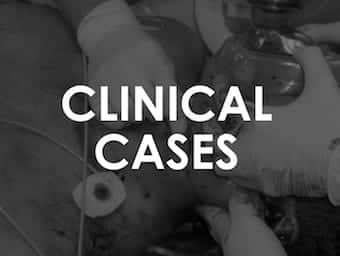
High-flow nasal cannula
High-flow nasal cannula aka heated humidified HFNC or high floe nasal prongs used in cases of hypoxic respiratory failure
The LITFL Critical Care Compendium is a comprehensive collection of pages concisely covering the core topics and controversies of critical care.

High-flow nasal cannula aka heated humidified HFNC or high floe nasal prongs used in cases of hypoxic respiratory failure

Gastric residual volume is the amount aspirated from the stomach following administration of enteral feed. An aspirated amount of ≤ 500ml 6 hourly is safe and indicates that the GIT is functioning

Much to our disgust EMCrit beat us to this one, hands down. But, given that the bougie is my favourite piece of kit and best buddy in the resus room, I’ve gone ahead and reposted these videos on LITFL. They…

OK people, time to share. Following on from befriend the bougie! @MDaware shared a great tip about using the bougie to assist in intercostal catheter placement in obese patients. Indeed, I suggested that the bougie is so fantastic, if there…

KEY FEATURES CAB (ERC still advocates 5 initial rescue breaths) good quality CPR in 15:2 ratio removal of ‘look, listen, feel’ de-emphasis on pulse check AED and defibrillation use encouraged (infants manual defibrillation) capnography recommended defibrillation: 4 J/kg adrenaline 10…

Pancreatitis is inflammation of the pancreas and involves activation of proteolytic enzymes that may progress to haemorrhagic necrosis of the pancreatic parenchyma

Refractory hypoxia, leading to dysoxia at the cellular level, can be difficult to manage in severe acute respiratory distress syndrome (ARDS)

In Australia, a Rapid Response System (RRS) is a hospital-wide system to recognise and respond to the deteriorating patient is a requirement as set out in Standard 9 of the National Safety and Quality Healthcare Standards.

Clinical governance is “a framework through which organisations are accountable for continuously improving the quality of their services and safeguarding high standards of care by creating an environment in which excellence in clinical care will flourish.”

Ciprofloxacin: quinolone antibiotic; inhibition of enzymes required for bacterial DNA replication, transcription, repair and recombination.

Error in research can be systematic or random; systematic error is also referred to as bias

Reviewed and revised Chris Nickson and Sarah Yong STEROIDS AND TBI Roberts I, Yates D, Sandercock P, et al: CRASH trial collaborators: Effect of intravenous corticosteroids on death within 14 days in 10008 adults with clinically significant head injury (MRC…